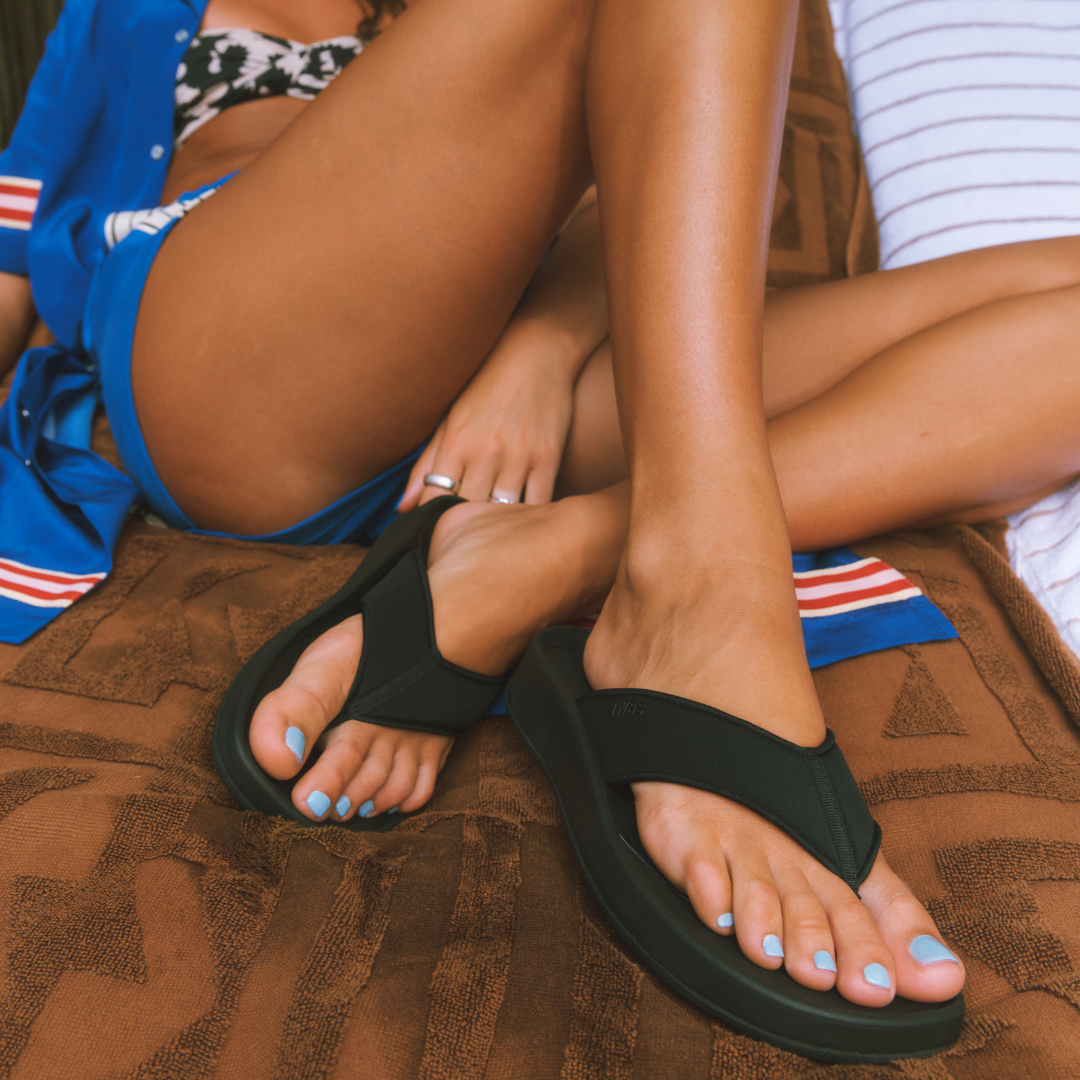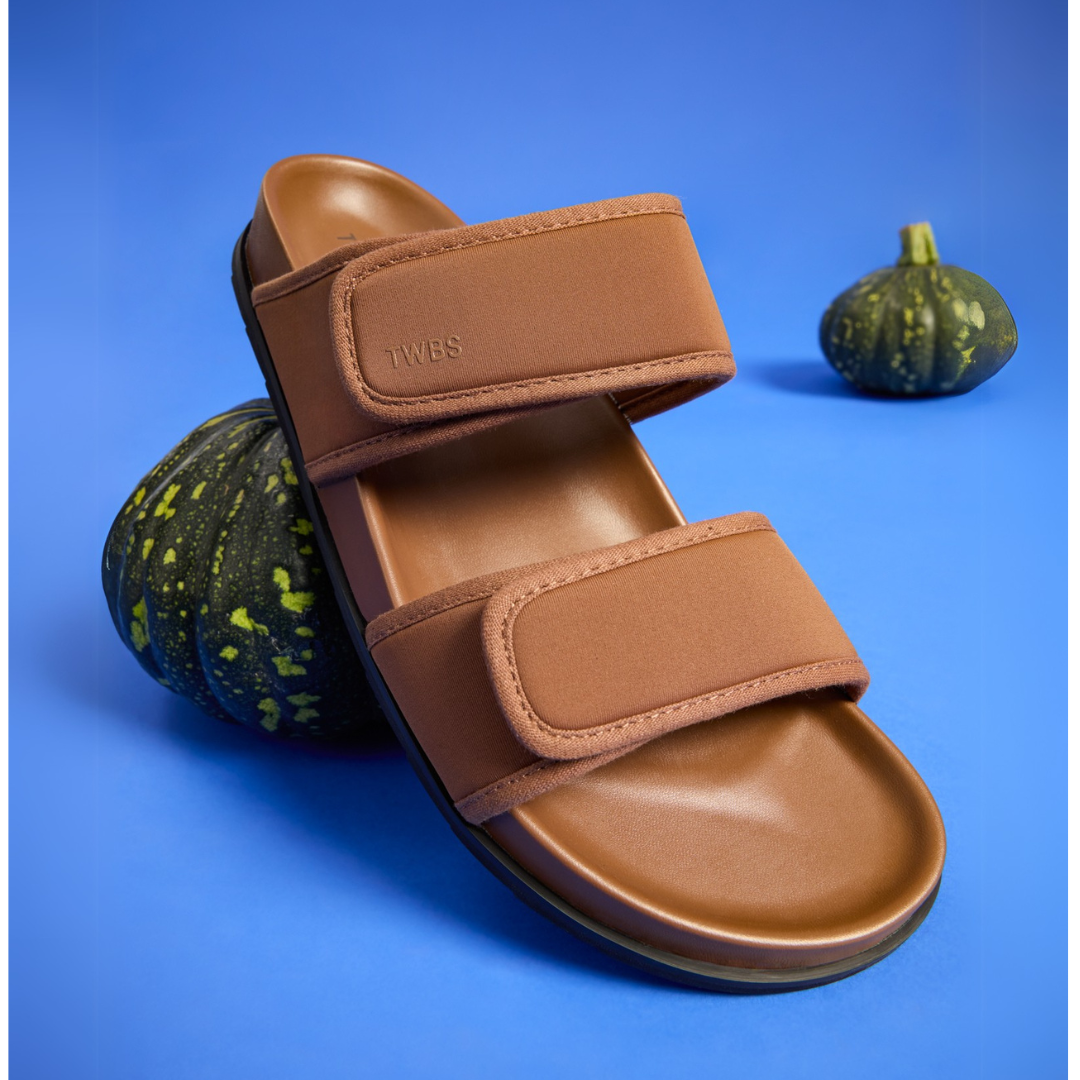You know when that time of year rolls around and your toes start to feel so icey they could drop right off? If you’re anything like us you probably jump online and start searching for boots, pronto. For a smart shopper concerned with sustainability, you may have heard that natural fibres are all the rage in fashion right now, so when it comes to a pair of shoes... is leather going to be the most environmental option?
When we founded TWOOBS back in 2016, using leather was completely out of the question; we love animals and we would never want to use them in our shoes. But as our brand has grown and sustainability has become a key pillar of our business, we’ve had to do a lot of digging to work out which materials really are going to be best for the environment.
Whilst the term leather evokes an idea of a material that is “natural,” its synthetic counterparts tend to have people thinking of plastic… but the more we did our research, as animal lovers we were pretty pleased to find out that leather isn’t all that it’s cracked up to be.
We asked our community to send us the questions about the mass production of leather that had them stumped, so we could shed some light on this murky subject.
Q: Is leather production bad for the environment?
Short answer: yes. Leather production is catastrophic in terms of deforestation and biodiversity loss, as well as greenhouse gas emissions. It is extremely energy and water intensive to produce with lots of chemicals used in the tanning process. A lot of people argue that leather is biodegradable so it’s better for the environment, but that is entirely dependent on the tanning process which makes a lot of leather today unfortunately unable to degrade.
Q: I’ve always been torn whether or not synthetic alternatives are better than leather? A pair of real leather boots for example really do last a lot longer than PU ones.
This comparison is often made when you’re not comparing equal quality products. A pair of good leather boots that you’ve invested in will definitely last longer than a pair of cheap PU boots from a fast fashion retailer. If you take Dr. Martens as an example, their vegan alternatives are as durable as their leather ones, and the price is the same which suggests the quality of the materials are similar. Do your research and try to find good quality alternatives. It’s also interesting to think about your perception of leather vs your perception of a leather alternative. As consumers we’ve been trained to think leather is a good quality product that we can hold onto, and maybe we don’t treat our leather-alternative products with the same level of faith and care.
Q: I’m concerned about shedding micro plastics from my clothes/footwear/etc and so I thought leather might be a better alternative - what do you think?
If your only concern is micro plastics then leather might appear like the better alternative, but the reality of the state of our environment is it’s necessary to zoom out and assess more than just micro plastics. Research shows that the total negative environmental impact of a synthetic alternative like PU (a vegan leather which includes plastics) is still one third lower than leather. Part of the process of creating leather includes an adhesive which is also plastic based and made with fossil fuels. When we wash synthetic materials we now know micro plastics can leak into our waterways, but luckily we don’t have that problem with accessories like shoes and bags because we’re not putting them in the wash.
Q: I’m against killing an animal for a singular purpose (eg only for a certain body part), but if the whole animal is used and reared in an ethical way or if the animal dies of natural causes (that is, old age) then couldn’t leather be made then instead of discarding it?
It’s a common misconception that all or even most leather comes from cows where the meat was also used for consumption. In some places like in the US this can be true, but in India and China, where much of the world’s leather comes from, cows are specifically grown for their skin. Because they’re not concerned with the quality of their meat, they’re usually malnourished and live in very poor conditions.
It feels important to think about what constitutes an ethical way of killing an animal. The majority of today’s meat and leather is mass produced and their lives end in abattoirs which does not feel ethical for the animals or the humans involved. Did you know there’s a form of post traumatic stress disorder that abattoir employees can develop which includes depression, panic and dissociation?
Q: Is vegan leather just a marketing ploy to sell cheap plastic products? It seems like there are a lot of cheap pleather products now marketing themselves as vegan leather for more money.
There is more to a product being vegan than just the synthetic elements - there has to be research done into practices including dyes and glues. We would say if a product says it’s made out of “vegan leather” but isn’t actually vegan then yes that sounds like a marketing ploy.
Q: But if the cow is going to be killed anyway (for the meat industry) is it better to use all of it? (Zero waste!) although I’ve heard the water waste is huge during processing... but still it makes me question if using a waste product for something more is better than not at all?
The reality of utilising this waste product is you are still supporting an industry that ultimately is doing terrible things for the environment. A change in demand is the only thing that will result in a change in supply, if consumers (in this case people utilising the leather) keep creating demand, suppliers will continue to supply. Also as previously mentioned a large percentage of leather does not come from cows that are also being used for meat.
--
We hope this helped to demystify some of your questions around leather and sustainability! A study from Oxford suggests adopting a vegan lifestyle can lower a person’s carbon footprint by 70%, and whilst this feels widely accepted now in terms of not eating animal products, we feel it’s time we applied this knowledge to our fashion buying habits as well.
If you want to know more about this topic, we really highly encourage you to do some further research including watching this video which shows the process of how animal skin is turned into wearable leather, and checking out this great post from our friends over at Sans Beast. If you have any further questions, feel free to DM them to us at @twoobs anytime.
Jess and Stef Dadon, TWOOBS founders









